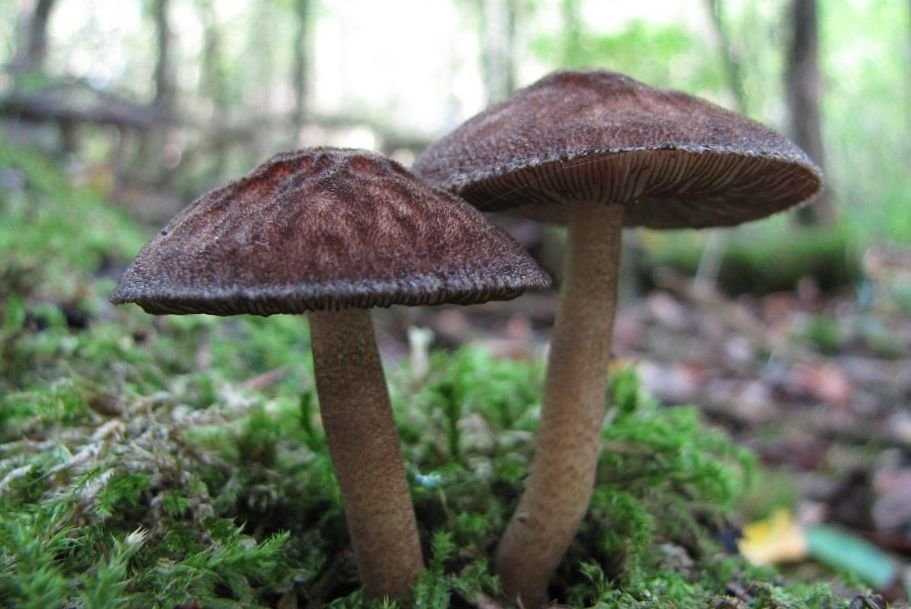Umber whip (Pluteus umbrosus)
- Division: Basidiomycota (Basidiomycetes)
- Subdivision: Agaricomycotina (Agaricomycetes)
- Class: Agaricomycetes (Agaricomycetes)
- Subclass: Agaricomycetidae (Agaricomycetes)
- Order: Agaricales (Agaric or Lamellar)
- Family: Pluteaceae (Pluteaceae)
- Genus: Pluteus (Pluteus)
- Type: Pluteus umbrosus

Hat: a very thick and fleshy hat reaches ten cm in diameter. The hat is thinner along the edges. At first, the hat has a semicircular, plano-convex or prostrate shape. In the central part there is a low tubercle. The surface of the cap is whitish or dark brown. The surface of the cap is covered with a felt, radial or mesh pattern with granular ribs. On the edges of the hat has a grayish-walnut color. The hairs on the edges form a jagged fringe.
Records: wide, frequent, not adherent, whitish in color. With age, the plates become pinkish, brown at the edges.
Disputes: ellipsoid, oval, pinkish, smooth. Spore powder: pinkish.
Leg: cylindrical leg, placed in the center of the cap. To the base of the leg thickens. Inside the leg is solid, rather dense. The surface of the leg has a brownish or off-white color. The leg is covered with longitudinal dark fibers with granular brownish small scales.
Pulp: under the skin the flesh is light brown. It has a bitter taste and a sharp smell of radish. When cut, the flesh retains its original color.
Edibility: Plyutey umber, edible, but completely tasteless mushroom. Like all mushrooms of the Plyutei genus, umber is a real challenge to the culinary skills of a mushroom lover.
Similarity: Umber whip is quite easy to identify by the characteristic surface of the cap and by the mesh pattern on it. In addition, the place of growth of the fungus allows you to cut off its false counterparts. True, this fungus can also grow in wood immersed in the soil, which makes it a little more difficult to identify it. But, a brownish hat with hairs and radial stripes, as well as a dense and short leg, like for a Plyutei, will leave all doubts behind. For example, Plyutei deer does not have a mesh pattern on the hat, and the edges of the plates have a different color. Dark-edge Plyutey (Pluteus atromarginatus), as a rule, grows in coniferous forests.
Spread: Plutey umber is found from July to September. At the end of August, it occurs more massively. Grows in mixed and deciduous forests. Prefers rotting branches, stumps and wood immersed in the soil. Grows in small groups or singly.









